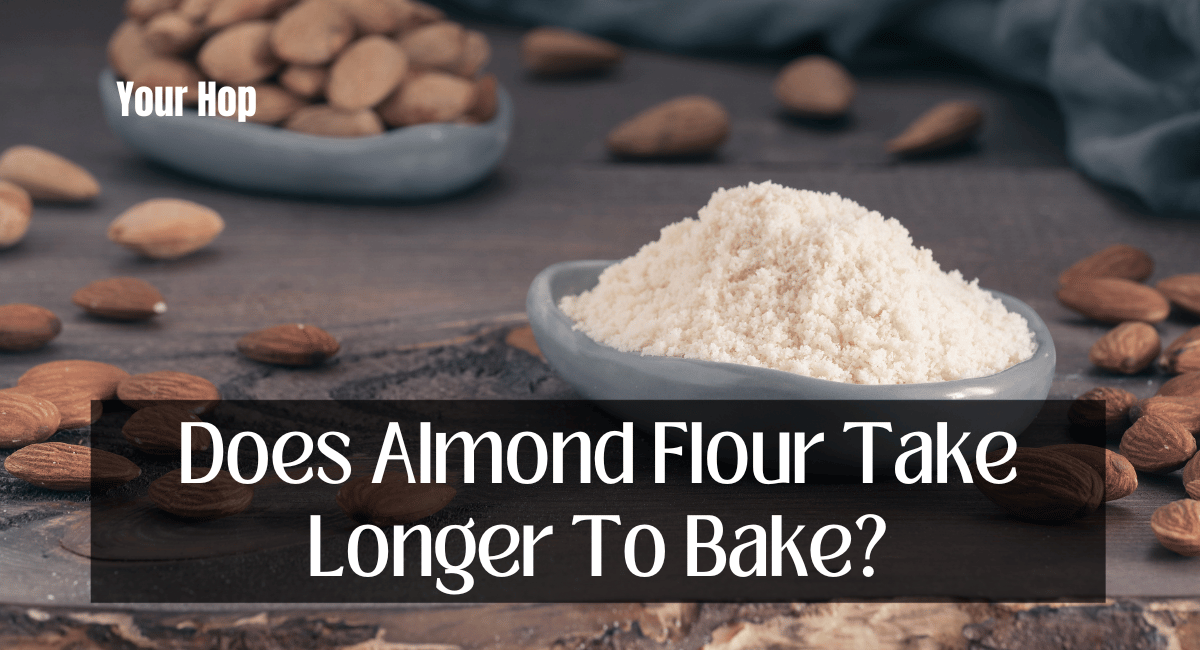Almond flour has gained popularity among gluten-free and low-carb bakers as an alternative to wheat flour. It is well-known for its rich, nutty flavor and delicate texture, making it an ideal ingredient for various dishes. However, one query frequently posed by bakers is whether baking with almond flour requires more time. In this article, we will investigate the properties of almond flour and its effect on baking times and provide helpful insights and advice for almond flour.
Does Almond Flour Take Longer To Bake?
Yes, baking with almond flour takes longer than with conventional wheat flour. Almond flour’s composition is the primary contributor to this disparity. Almond flour is rich in fats and proteins, unlike wheat flour, which predominantly comprises carbohydrates. These fat concentrations are exceptional at retaining hydration. Therefore, when baking with almond flour, excess moisture in the batter or dough takes longer to dissipate during baking.
Those unfamiliar with baking with almond flour may find this extended baking time challenging. Despite this, it is essential for culinary success to comprehend this unique characteristic. Consider utilizing almond flour-specific recipes to mitigate this issue. In addition, you can experiment with blending almond flour with other gluten-free flour to enhance the texture and overall baking experience.
Why Does Almond Flour Take Longer To Bake?
High lipid content is why baking with almond flour takes longer. Because fats are exceptional at retaining moisture, almond flour-based batters and doughs tend to be more moist. This increased moisture content results in a prolonged baking time because the excess moisture must evaporate before the product is completely baked.
Tips & Tricks To Baking With Almond Flour
Here are some suggestions and techniques for baking with almond flour:
1. Measure Well
Almond flour should not be packed when measured. It should loosely fit into your measuring cup. Almond flour makes baked products too dense if used in excess.
I scoop almond flour carefully from the bag or jar and set it in a measuring cup. Then use a butter spatula to scrape the excess off the top. One cup of blanched almond flour equals 4 ounces when measured by weight.
2. Use Less Almond Flour
Almond flour will work better than wheat flour or gluten-free flour because it has less of a ratio of almond flour to regular flour.
The following are guidelines for using almond flour in baking:
You can use up to a third of a cup of almond flour for every wheat or gluten-free flour when baking with yeast (like bread, rolls, and pizza).
In recipes that don’t call for yeast, like cookies, scones, cakes, biscuits, and muffins, almond flour can be used instead of 25% of the flour. Say a recipe calls for one cup of flour. Instead of 3/4 cup of regular flour, use 1/4 cup of almond flour.
You will observe that baked goods containing even a small amount of almond flour retain moisture and softness longer and have a more robust flavor. Adding just a few teaspoons of gluten-free flour to the cake batter instead of almond flour will make a big difference in how the cake turns out.
3. Almond Flour Works Better In Cakes vs. Cookies
Because almond flour lacks the desirable light and airy texture, I do not recommend using it alone when baking cakes and bread. However, if cakes and brownies do not require a light and airy texture, almond flour could be the only flour.
The only exception is French macarons, cookies created from almond flour alone.
4. Use a Little Almond Flour To Add and Retain Moisture
Typically, gluten-free baked products become dry and crumbly after two days. However, substituting 1-2 tablespoons of flour for almond flour in a recipe will reduce the rate at which gluten-free baked goods dry out. The high-fat content of almond flour does marvels for keeping cakes and breads moist for several days.
5. Add a Binder When Baking With Almond Flour
Add a binder, such as xanthan gum, guar gum, or psyllium husk, to baked products made with almond flour to give them structure. These binders are used in gluten-free flour mixtures to “bind” the flour together in the absence of gluten (the “glue” of baked goods).
For bread recipes, you need two teaspoons of xanthan gum for every cup of flour. But for almond flour, just 1/4 teaspoon of xanthan gum can make a big difference.
6. Lower Cooking Time And Temperature
Almond flour-based baked products are typically quicker to bake. If attempting to convert a wheat flour recipe to almond flour, reduce the temperature by 25 degrees and cook for one-fourth less time (keep a watch on the baked goods to avoid burning).
7. Cool In The Pan
After baking, almond flour-based baked products are more moist and likely to crumble. Allow baked goods made with almond flour to cool thoroughly before removing them from a baking sheet or pan. This will give them time to solidify as they chill, increasing the likelihood that they will maintain their shape.
Thanks for visiting our site hope you like it and find it helpful..






